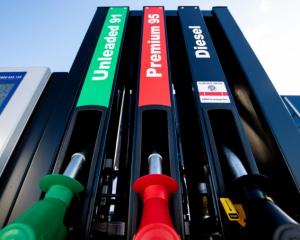Port Otago's bumper result, for the year to June, was underpinned by a $10.7million increase in property valuations and $24.7million contribution from the sale of shares of competitor Lyttelton Port of Christchurch during the year.
Since 1988, the ORC has received $141.2million in Port Otago dividends.
Revenue for the year rose from $77.27million to $80million, earnings before interest and tax declined from $26.1million to $24.2million, while the operating profit before property valuations (unrealised) and before tax grew from $21million to 24million.
Port Otago chairman Dave Faulkner noted the company's ''Next Generation'' project to deepen and widen the shipping channel; 13km between Port Chalmers and Taiaroa Head, had begun, with the first stage to deepen to 13.5m by December, then to 14m a year later.
''By using our own dredge, the New Era, to complete the work, and with more than 50% of the channel already at 14m, the $8million cost is expected to be substantially cheaper than any other port in the country,'' he said.
Port Otago and Port of Tauranga are the first two of several ports around the country to actually begin dredging, in preparation for the larger, new generation container ships.
The import/export container volumes were down 4.7% and empty container handling (ships' swapping) was down 3%.
Mr Faulkner said dairy warehouse volumes as at June were ''at high levels'', but those volumes were expected to be exported, as this season's product came in.
He was pleased to note bank borrowings had been reduced during the year, from $120million to $55million and the equity ratio had over a year increased from 70% to 81%, and Port Otago had $20million cash in hand, which would be used to repay debt when it came due.
''The conservatively geared balance sheet places the group in a strong position to undertake the Next Generation developments and also to consider other investment opportunities as they arise,'' Mr Faulkner said.
There was $6.9million of capital expenditure during the year, including the final payment for the new $11million tug Taiaroa, with expectations the Next Generation project would cost $30million during the next two years.
Chalmers Properties booked a 2% increase in rentals to $14million, underpinned by its ownership of a Bunnings outlet in Auckland and several rent reviews.
The property sales saw Chalmers portfolio value decline from $265million to $264million, but that was offset by a $10.7million gain in property revaluations, he said.
Auckland's property values declined from $95million to $90million, Hamilton increased 21% from $28million to $34million, while Dunedin was down 1%, from $142million to $140million.
Mr Faulkner said completion of the pallet company CHEP's office and warehouse in Dunedin during the year was an example of the type of redevelopments Port Otago wanted to see in the industrial area.












